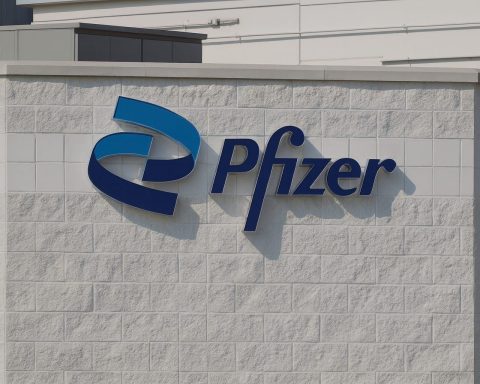Singapore – 26 November 2025. The Singapore stock market finished higher on Wednesday, with the Straits Times Index (STI) extending its rebound as investors cheered growing expectations of a US Federal Reserve rate cut next month and digested a flurry of local corporate news.
The benchmark STI gained 0.4%, or 15.93 points, to close at 4,501.56. The iEdge Singapore Next 50 Index added 0.2% to 1,445.42, while market breadth was slightly positive, with 280 gainers versus 258 losers on turnover of about 1.3 billion shares worth S$1.3 billion. [1]
Below is a full recap of how the Singapore stock market traded today and the key developments investors are watching.
STI today: modest gain after strong open
The STI opened strongly at 4,518.44, up about 0.73% at the open, tracking a global risk-on mood after Wall Street rallied for a third straight session. [2] However, some profit-taking into the afternoon saw the index give back part of its early advance to finish with a more modest 0.4% gain at 4,501.56. [3]
Across the region:
- Japan’s Nikkei 225 jumped 1.8%
- South Korea’s Kospi surged 2.7%
- Hong Kong’s Hang Seng Index added 0.1%
- Malaysia’s FBM KLCI rose 0.8% [4]
That backdrop helped Singapore shares stabilise after Tuesday’s mild pullback, when the STI slipped 0.2% to 4,485.63, even as most regional peers rose. [5]
Global drivers: weak US data, stronger rate‑cut bets
Today’s positive tone was driven largely by global macro signals.
Overnight, US equities extended their rally as weaker‑than‑expected US retail sales and consumer confidence data reinforced the view that the Fed is likely to cut rates at its December meeting. [6]
- An MSCI index of Asia‑Pacific shares outside Japan climbed about 1.1%. [7]
- Fed funds futures now imply around an 80% probability of a 25‑basis‑point cut at the December 10 FOMC meeting, up sharply from roughly even odds a week ago. [8]
Analysts say this “dovish data + Fed pivot” narrative is encouraging flows back into relatively stable, higher‑yielding Asian markets – a theme that has already helped push Singapore equities to multi‑year highs in recent months. [9]
Market snapshot: leaders, laggards and sector moves
Seatrium tops STI on major BP deepwater contract
Seatrium was the standout performer on the STI, rallying 2.9% to S$2.12, making it the index’s top gainer. [10]
The jump came as the offshore and marine group announced it had been awarded a second deepwater floating production unit (FPU) contract from BP for the Tiber FPU in the Gulf of America (formerly Gulf of Mexico). [11]
Key points from the Seatrium news:
- Contract covers engineering, procurement, construction and onshore commissioning of the Tiber FPU. [12]
- The project is Seatrium’s second consecutive deepwater FPU for BP, following the Kaskida FPU award in December 2024. [13]
- Business Times reports the deal lifts Seatrium’s net order book for recent wins to more than S$2 billion, further underpinning its longer‑term revenue visibility. [14]
The contract win is seen as a strong validation of Seatrium’s strategy to focus on complex offshore energy and transition infrastructure after years of restructuring and legacy issues, and it clearly boosted sentiment in the stock today.
Keppel DC REIT underperforms
At the other end of the STI table, Keppel DC REIT was the weakest link, slipping 1.7% to S$2.28. [15]
There was no single new negative catalyst disclosed today, but data‑centre‑related REITs globally have been sensitive to:
- Valuation concerns amid rising bond yields earlier in the year
- Questions over capex cycles and power costs
In Singapore, rate‑cut hopes are supportive for yield plays such as REITs, but investors continue to rotate selectively within the space, favouring names with clearer distribution growth and lower gearing.
Banks tick higher; UOB funding move in focus
The three local banks extended their gains:
- DBS +0.6% to S$53.84
- OCBC +0.6% to S$18.23
- UOB +0.2% to S$33.92 [16]
Bank stocks are leveraged to both:
- The rate‑cut narrative (which can steepen yield curves and support loan growth), and
- Hopes of a soft landing in the US and Asia.
Separately, UOB drew attention in debt markets after pricing €850 million (about US$979 million) of covered bonds under its global covered bond programme, reinforcing the group’s ability to tap long‑term funding at relatively attractive rates. [17]
Stock‑specific highlights: ThaiBev, Coliwoo, Singtel & ComfortDelGro
ThaiBev: softer spirits earnings, but steady dividends
Singapore‑listed Thai Beverage (ThaiBev) was firmly in the spotlight after releasing full‑year results:
- Net profit fell about 6.8–7% year‑on‑year to 25.4 billion baht (≈ S$1.02 billion) for FY2025, hurt by weaker demand in its core spirits business and softer performance in food operations. [18]
- The group cited higher brand‑building and product launch expenses, as well as increased operating costs from its restaurant expansion. [19]
- ThaiBev proposed a final dividend of 0.47 baht per share, taking the total dividend for FY2025 to about 0.62 baht per share, pending shareholder approval. [20]
The earnings disappointment weighed on sentiment toward consumer staples and brewery plays, but the maintained dividend payout is likely to appeal to income‑oriented investors.
Coliwoo: headline profit plunges, but core business improving
Freshly listed co‑living operator Coliwoo posted a 75.1% slump in H2 net profit to S$5.7 million, from S$22.9 million a year earlier. [21]
The sharp drop was mainly due to:
- The absence of a one‑off retrofitting income booked in the previous year
- Listing‑related expenses and fair‑value losses on investment properties [22]
Under the hood, though, the core picture looked more resilient:
- Core profit after tax and minority interests rose 62.6% to S$22.9 million, driven by higher rental income and stronger occupancy across its portfolio. [23]
- Full‑year revenue eased 10.4% to S$46.7 million, but rental income from owned properties jumped 23.9%, and management services income more than doubled. [24]
- Coliwoo declared a final dividend of S$0.02 per share for its first year as a listed company. [25]
Management highlighted a pipeline targeting nearly 4,000 rooms by end‑2026, with the heritage Bukit Timah Fire Station property already in operation and Coliwoo Midtown set to open near the Singapore Management University in early 2026. [26]
Coliwoo shares eased about 0.9% to S$0.56 on Tuesday before the results release, and will likely be actively traded as investors weigh its growth story against headline earnings volatility. [27]
Singtel: Optus unit prices S$200m in 10‑year notes
In telcos, Singtel remains on traders’ radar after its Australian subsidiary Optus Finance priced S$200 million in 10‑year fixed‑rate notes due 2035 at 2.48%, under a €3 billion Euro Medium Term Note (EMTN) programme. [28]
- The net proceeds will be swapped into Australian dollars and used for Optus’ general corporate purposes. [29]
- Singtel shares had eased 0.4% to S$4.77 before the announcement, and the issue is seen as part of the group’s ongoing capital management efforts. [30]
With Singapore government bond yields having retreated from their recent peaks, high‑grade corporate issuance like Optus’ is garnering strong interest from fixed‑income investors.
ComfortDelGro: robotaxi partnership in China and beyond
Transport giant ComfortDelGro also features prominently in today’s “stocks to watch” lists after announcing a strategic tie‑up with Hello Robotaxi:
- The two parties signed an MOU to collaborate on large‑scale commercial robotaxi deployment in China and overseas markets. [31]
- The partnership will leverage ComfortDelGro’s expertise in fleet management and point‑to‑point operations, and Hello Robotaxi’s autonomous‑driving technology stack. [32]
The news extends ComfortDelGro’s push into autonomous mobility, building on its earlier pilots in Guangzhou and other cities, and may support a longer‑term re‑rating if commercial deployment scales successfully. [33]
SGX & capital‑markets developments: IPOs, dual listings and crypto futures
Beyond the daily index move, several structural developments around SGX are shaping sentiment toward Singapore as a capital‑markets hub.
UltraGreen.ai files for SGX mainboard IPO
Medical imaging and surgical‑tech company UltraGreen.ai has filed for a listing on the SGX mainboard, aiming to raise around US$150 million through its initial public offering. [34]
According to its filings and media reports:
- UltraGreen.ai specialises in dye‑and‑camera systems that help surgeons and clinicians visualise blood flow and tissue perfusion in real time. [35]
- The company plans to use Singapore as a manufacturing base for cameras deployed in outpatient clinics and future Asian markets, and to build a lyophilisation plant locally once a similar US facility is completed. [36]
- Applications for the IPO close on 1 December, with trading expected to start on 3 December. [37]
The deal will be closely watched as a test of global investor appetite for growth‑stage healthcare and AI‑enabled medical technology listed on SGX.
MAS & SGX push for easier dual listings with Nasdaq
Last week, Singapore took a major step to boost its equity market’s competitiveness:
- The Monetary Authority of Singapore (MAS) and SGX unveiled plans for a “dual listing bridge” with Nasdaq, enabling companies with at least S$2 billion in market cap to pursue streamlined dual listings in Singapore and New York using a single set of prospectus documents. [38]
- The new Global Listing Board, announced in a joint statement by SGX and Nasdaq, is targeted to go live around mid‑2026. [39]
The initiative is part of a broader MAS push that includes appointing asset managers to run S$2.85 billion under an Equity Market Development Programme, aimed at deepening liquidity and attracting high‑growth Asian companies to list – and stay – in Singapore. [40]
SGX launches bitcoin & ether perpetual futures
In derivatives, SGX’s drive to position itself at the intersection of traditional finance and digital assets is gathering momentum:
- On 17 November, SGX’s derivatives arm announced it would launch perpetual futures on bitcoin and ether on 24 November, available to accredited and institutional investors only. [41]
- Early coverage of the launch suggests day‑one trading volume of around US$35 million across some 2,000 contracts, underscoring robust institutional interest in regulated crypto exposure. [42]
The move complements Singapore’s broader ambition to be a trusted digital‑assets hub, and adds another stream of fee income and trading activity for the exchange over time.
Asset‑management backdrop: Temasek’s Seviora scales up
Another piece of news reinforcing Singapore’s status as a financial hub came from the asset‑management sector:
- Seviora Group, the Temasek‑owned asset‑management platform, announced it will integrate Pavilion Capital, lifting total assets under management to about US$72 billion. [43]
- Pavilion will retain its brand and pan‑Asia private‑equity focus but will distribute products under the Seviora umbrella. [44]
The move is part of Temasek’s broader structural overhaul and underscores continued efforts to build scale and product breadth in Singapore‑based asset managers – a supportive medium‑term backdrop for SGX’s capital‑markets ecosystem.
What today’s session means for Singapore investors
Putting it all together, today’s trading on 26 November 2025 highlights several themes for Singapore‑focused investors:
- Macro remains in the driver’s seat.
The STI’s advance was tightly linked to global risk sentiment and shifting Fed expectations. As long as data keeps pointing toward a soft‑landing scenario with gradual rate cuts, Singapore’s defensive‑growth profile and yield appeal should continue to attract regional flows. [45] - Stock‑picking is crucial at 4,500+.
With the STI hovering near multi‑year highs, indices are less likely to move in straight lines. Names with clear growth catalysts (Seatrium’s order wins, ComfortDelGro’s robotaxi push, Coliwoo’s co‑living expansion) are being rewarded, while companies facing earnings pressure (ThaiBev, some REITs) are seeing more muted reactions or underperformance. [46] - SGX is quietly rebuilding its equity story.
The combination of higher‑quality IPOs like UltraGreen.ai, dual‑listing reforms with Nasdaq, and the launch of crypto perpetual futures hints at a more dynamic SGX over the next 12–24 months, even as the market continues to grapple with delistings and tight liquidity in smaller caps. [47]
For now, the message from today’s session is that Singapore remains firmly plugged into the global rate‑cut and risk‑on narrative, while local corporate developments are giving traders plenty of stock‑specific angles to trade around.
References
1. www.businesstimes.com.sg, 2. english.news.cn, 3. www.businesstimes.com.sg, 4. www.businesstimes.com.sg, 5. www.businesstimes.com.sg, 6. www.reuters.com, 7. www.reuters.com, 8. www.reuters.com, 9. www.straitstimes.com, 10. www.businesstimes.com.sg, 11. investors.seatrium.com, 12. petroleumaustralia.com.au, 13. petroleumaustralia.com.au, 14. www.businesstimes.com.sg, 15. www.businesstimes.com.sg, 16. www.businesstimes.com.sg, 17. www.manilatimes.net, 18. www.businesstimes.com.sg, 19. www.businesstimes.com.sg, 20. sbr.com.sg, 21. www.businesstimes.com.sg, 22. www.businesstimes.com.sg, 23. www.businesstimes.com.sg, 24. www.businesstimes.com.sg, 25. www.businesstimes.com.sg, 26. www.businesstimes.com.sg, 27. www.businesstimes.com.sg, 28. www.businesstimes.com.sg, 29. www.businesstimes.com.sg, 30. www.businesstimes.com.sg, 31. www.businesstimes.com.sg, 32. www.businesstimes.com.sg, 33. www.businesstimes.com.sg, 34. www.businesstimes.com.sg, 35. www.businesstimes.com.sg, 36. www.businesstimes.com.sg, 37. www.businesstimes.com.sg, 38. www.globenewswire.com, 39. www.globenewswire.com, 40. www.reuters.com, 41. www.reuters.com, 42. cryptorank.io, 43. www.tradingview.com, 44. www.tradingview.com, 45. www.reuters.com, 46. www.businesstimes.com.sg, 47. www.businesstimes.com.sg










